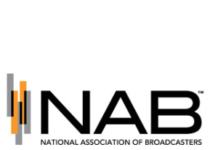
One day after Quu released its inaugural In-Vehicle Visuals Report, the radio dashboard tech provider held a virtual summit with four well-known radio names to discuss the state of the dashboard.
Moderated by Quu CEO Steve Newberry, the webinar saw Jacobs Media’s Fred and Paul Jacobs, Xperi’s Joe D’Angelo, and McVay Media’s Mike McVay all contribute their expertise to the analysis. Here’s what they say about the present and future of automotive radio.
Jacobs Media President Fred Jacobs emphasized the unique connection between radio hosts and drivers, highlighting the potential of dashboard messaging to serve as powerful “push notifications” for listeners on the move. He pointed out that many stations are currently missing out on strategically leveraging their messaging in vehicles, where a significant portion of the audience is alone and attentive.
He also stressed the importance of radio stations ensuring their presence on modern car interfaces like Apple CarPlay and Android Auto. Jacobs says metadata is key in enhancing the listener experience in cars and stations should improve the consistency, accuracy, and appeal of their metadata to stand out among the vast audio options available to drivers today.
He added, “We have a tremendous opportunity here to be able to connect with the audience in unique ways. And oh, by the way, a lot of other audio sources in the vehicle are not making use of any messaging. So this is a great opportunity for us.”
Jacobs Media VP Paul Jacobs took his time to discuss radio’s unparalleled access and reach within vehicles. He highlighted the significance of conveying radio’s persistent presence in cars to advertisers, underscoring the medium’s unique ability to influence consumer decisions at critical moments. Paul advocated for a stronger presence in the automotive sales process and suggested utilizing the car dashboard’s features to support advertising messages and promotions more effectively.
Paul remarked, “We need to look at a car now, not only as this amazing way to reach everybody in our town, but to reach them much more effectively and to really enhance what we’re offering to advertisers.”
Xperi Senior Vice President of Global Radio and Digital Audio Joe D’Angelo discussed the substantial progress made in transitioning radio into the digital age with Xperi’s HD Radio and DTS AutoStage development. With more than 100 million cars adapted to advanced radio broadcast technology, the shift towards digital radio has been significant, yet there remains room for growth in fully leveraging this transition.
“Broadcast radio is not alone. Everyone said it, I’ll just reiterate it. As cars become more and more connected, either through tethering or embedded modems, the ability for consumers to access other audio contents is just going to explode, said D’Angelo.
With the growth of in-car features like Apple CarPlay or Android Auto, radio’s advantage lies in its familiarity and trust with audiences, but the medium must rise to meet consumer expectations shaped by experiences with platforms like Netflix and Spotify.
Keeping this in mind, D’Angelo advised broadcasters to concentrate on their unique strengths, such as local community connections, rather than diluting their efforts across too many platforms. This focus, particularly on the digital dashboard, is seen as essential for maintaining relevance and maximizing impact.
Finally, McVay Media President Mike McVay brought a programmer’s perspective to focus on enhancing content quality and the overall listening experience. McVay is in favor of integrating visual elements into radio broadcasts.
“So imagine hearing a traffic report and looking at your screen and seeing the visualization of the map with the traffic problems at the same time you’re hearing it on the radio. Imagine a commercial where you get a QR code. All of those things can and will be a big part of the video-ization that’s going to happen,” he added.
McVay also wants to push for more unique and interesting uses of HD2 and HD3 signals for event listening like what SiriusXM does. Temporary or niche channels could also be promoted via the dashboard as a billboard.
Quu’s data, compiled by an independent contractor and analyzed by broadcast radio researcher Doug Hyde, is accessible at QuuReport.com.










In 2005 I had a car with a TV built into the dash. The device wouldn’t operate when the car was moving. In 2024 entertainment, graphics and information in the dash are desirable- but in my opinion these enhancement should only be available in the case of a stopped vehicle. Title and artist information is good-but traffic and weather info might be more desirable for the consumer-when it helps them avoid delays or floods. Thanks to Xperi for making efforts to not overdo it. Now, if they could get a better experience with HD radio by making it possible for a better reception experience. All too often the signal drops at the most inopportune time. Even info broadcast on the main HD channel can disappear when least expected. Traffic info? Great. QR codes? Dangerous. No one wants to see the person in the car next to them fiddling with their phone at 80MPH. Drivers have myriad distractions now. Adding to them won’t help highway safety. Dashboard graphics can. More should be done to make this happen for drivers and their safety.